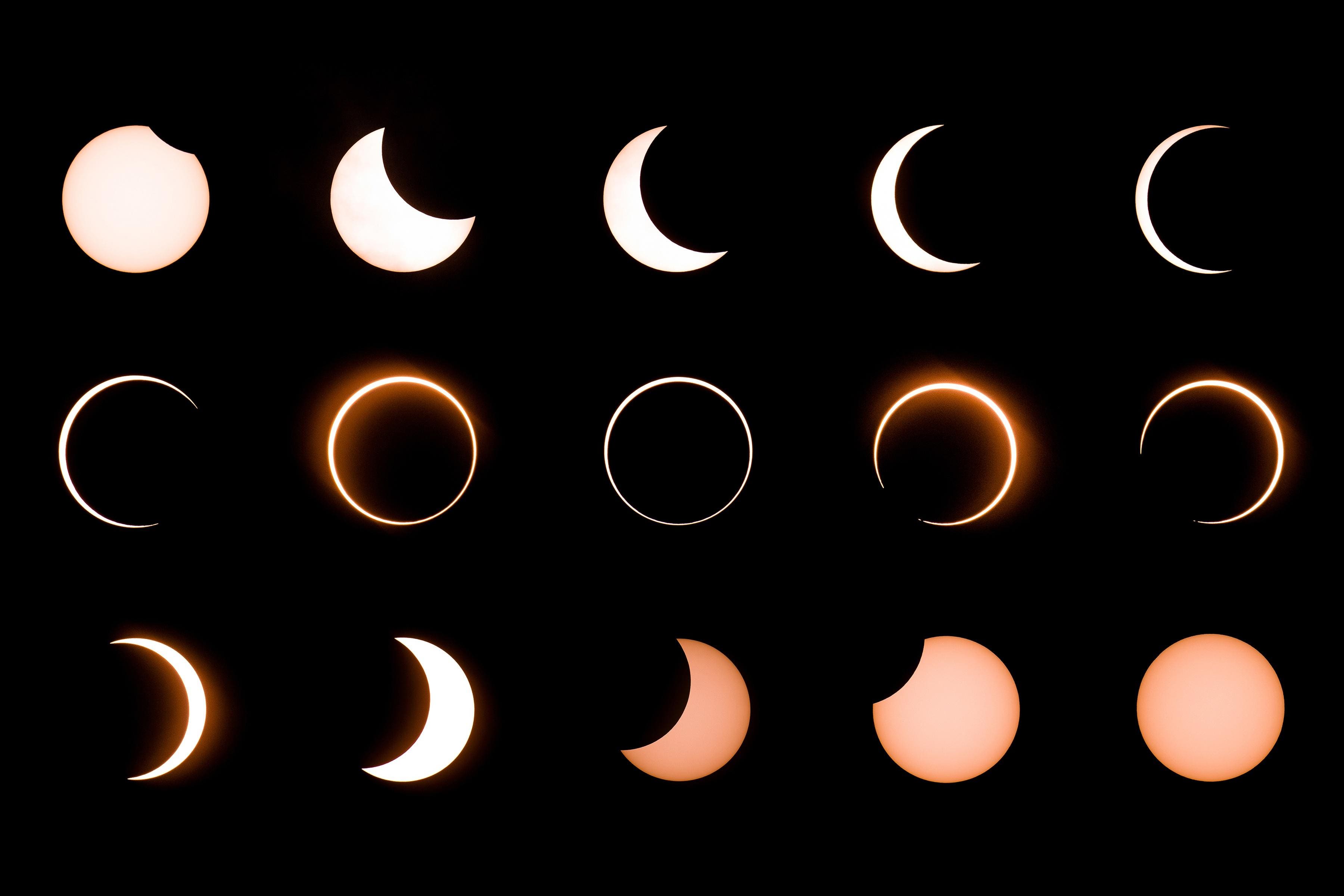
I’m the world’s only “eclipse journalist.” For the very latest on the “ring of fire” solar eclipse—including the latest travel and lodging options—please press the big blue “follow” button above or check my main feed for new articles each day.
When is the next eclipse? It’s on Saturday, October 14, 2023 and it will be visible across the Americas—and you don’t have much time left to make a plan.
It’s an annular solar eclipse—popularly known as a “ring of fire”—though almost everyone will see partial solar eclipse that day.
Only from within a narrow path through eight U.S. states will it be possible to see the “ring of fire”—meaning most Americans (save for the six million that live in the path) will need to make travel plans to get to the best places to see it.
Although it won’t be as big a deal as the total solar eclipse coming to North America on April 8, 2024, thousands of eclipse-chasers will descend on the U.S. Southwest to experience the first “ring of fire” in the nation since 2012 (though it a near-miss in 2021).
Note: During an annular solar eclipse it is never safe to look directly at the sun without solar eclipse glasses designed for solar viewing.
Here’s everything you need to know about the final solar eclipse of 2023:
The full path of the annular solar eclipse on October 14, 2023.
Where Is The October 2023 ‘Ring Of Fire’ Solar Eclipse?
The rare sight of a circle of light around the moon visible during the day will be possible only from within a 125 miles wide path through eight U.S states—Oregon, northern California, Nevada, Utah, northeastern Arizona, southwestern Colorado, New Mexico and Texas.
It will then be visible from Mexico’s Yucatan Peninsula, Belize, Honduras, Nicaragua, Panama, Colombia and Brazil.
However, everyone in the contiguous 48 states will have the opportunity to see at least a partial solar eclipse—and those close to the path will see a very large eclipse.
When you’re researching where to go, invaluable resources include the maps and information on GreatAmericanEclipse.com, Xavier Jubier’s Interactive Google Map and this amazing interactive map with simulations of exactly what you’ll see from any location.
Be sure to within “the stripes”—the path of the moon’s antumbral shadow from Oregon to Texas—on … [+]
When Is The October 2023 ‘Ring Of Fire’ Solar Eclipse?
The first location to see the “ring of fire” will be the Oregon coast (between Kernville and Denmark) at 9:15 a.m. PDT. The last location to see the “ring of fire” in the U.S. will be the Texas coast (Padre Island) at 11:58 a.m. CDT.
Though most of the attention will be on the U.S. it’s actually Brazil that will host the “ring of fire” for longest (55 minutes 24 seconds), followed by the U.S. (45 mins 8 seconds) and Columbia (38 minutes 12 seconds).
It’s a great idea to use Timeanddate.com’s dedicated page for the eclipse to get a full schedule of the eclipse for any location you type in—including the preceding and following partial phases.
Here’s an example for Bryce Canyon National Park in Utah:
Timeanddate.com’s full schedule of the eclipse for Bryce Canyon National Park in Utah.
Best Weather For The October 2023 ‘Ring Of Fire’ Solar Eclipse
To get a good view of this eclipse you will need a clear sky. The path through the U.S. is likely to be the clearest of the entire path—with all but the coasts of Oregon and Texas likely to see the eclipse—but that’s just the climate. “Climate is what you expect, weather is what you get” is a mantra for all eclipse-chasers.
- Climate predictions: read this incredible article by eclipse meteorologist Jay Anderson about the climate of the path. Then consult the interactive Eclipse Viewability Map from the North Carolina Institute for Climate Studies, which displays the historical likelihood of viewability for locations across North America. Make a Plan A accordingly—or at least select an area you can/want to visit that will likely have clear skies.
- Weather predictions: check the five-day forecasts, with Anderson’s The Eclipse Weather Desk invaluable in the days leading up to October 14. A professional weather app like Windy should also be on your smartphone.
Best Places To See The October 2023 ‘Ring Of Fire’ Solar Eclipse
Thousands have made, are making or will soon make plans and hotels, RV parks and campsites in the path are increasingly in short supply. The “best” place for you will depend on where you can drive/fly to—just make sure it’s in the path (or near to it, if you plan to get up early on October 14) and think about where blue skies are likely.
- Hotels: The availability of hotels varies, but Eugene (Oregon), Albuquerque (New Mexico) and San Antonio (Texas)—the largest cities in the path—all have hotel and motel rooms (at time of writing on Sept. 1).
- Camping and RV parks: A lot of campsites in the path are sold out, though that mostly applies only to those either in U.S. National Parks and State Parks or private campgrounds on or near the centerline of the path. Check out Hipcamp’s useful Best camping spots for the 2023 Solar Eclipse page—a company that told me in an email that fully 72% of its campsite inventory is still available in the path (as of Sept. 1)—though year-on-year bookings are up by 700%. The good news is that Texas, New Mexico and Oregon still had, at time of writing, at least 600 campsites each available to book in the path of the eclipse for October 14.
For some specific ideas, see my recent posts about special eclipse observing events being planned, hotels, lodges, festivals and RV parks to consider staying in as well as campsites and RV parks in the path.
Do check back for more options as we get closer to the eclipse.
What Is A ‘Ring Of Fire’ Solar Eclipse?
A “ring of fire” occurs when the moon appears smaller in the sky than the sun, so doesn’t block all of its light. In effect what will happen will be a partial solar eclipse. As the New Moon covers the sun’s center, its outer edges will form an annulus—a “ring of fire”—though only 91% of the sun will be blocked.
Those in the path will see a perfect circle for a few minutes—the closer you are to that centerline, the longer it will last—though it’s a diminishing return. All you really have to do is stay away from the southern and northern limits of the path, where the “ring of fire” will last for just a second.
From the “grazing zone” at the northern edge of the path of the annular solar eclipse on October 14 … [+]
‘Edge Effects’ At The ‘Ring Of Fire’ Solar Eclipse
However, some eclipse-chasers like to observe an annular solar eclipse from the edge because what they lose in duration they gain in another way. From the “grazing zone” at the edge it’s possible to see beads of light fizzing around where the limb of the moon appears to touch the sun. Called Baily’s beads, they’re caused by the mountains and topography of the moon—and it’s called a “broken annular” or “broken ring” eclipse.
That’s a sight primarily for specialists—most will want to head further into the path to properly see the grand sight of a “ring of fire.” Either way, it’s time to make a plan!
I am the editor of WhenIsTheNextEclipse.com and author of The Complete Guide To The Great North American Eclipse of April 8, 2024.
Wishing you clear skies and wide eyes.









